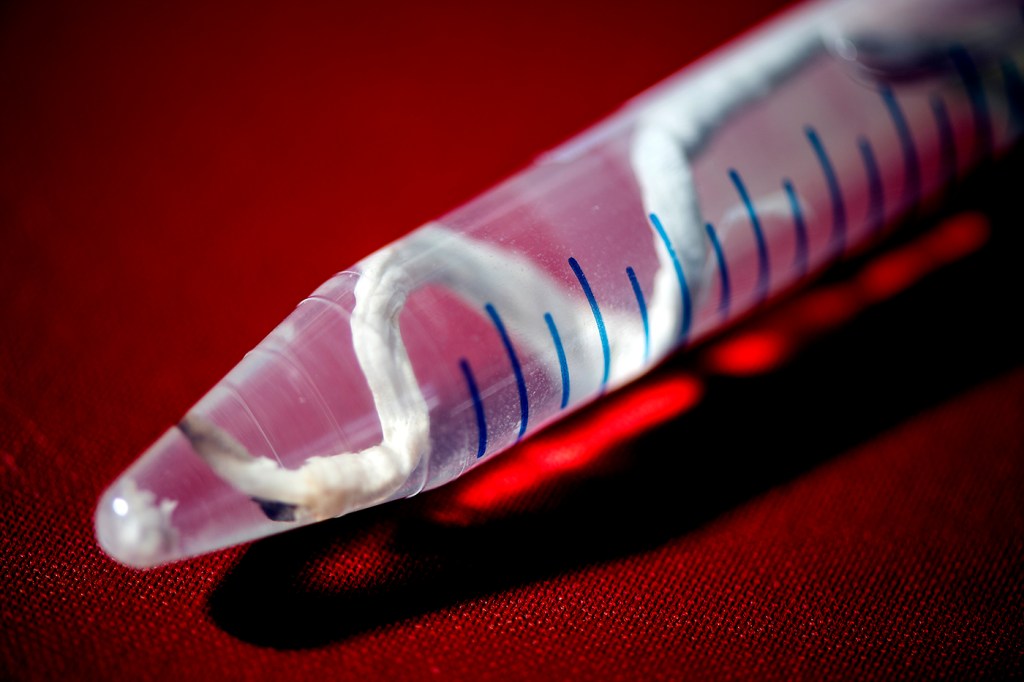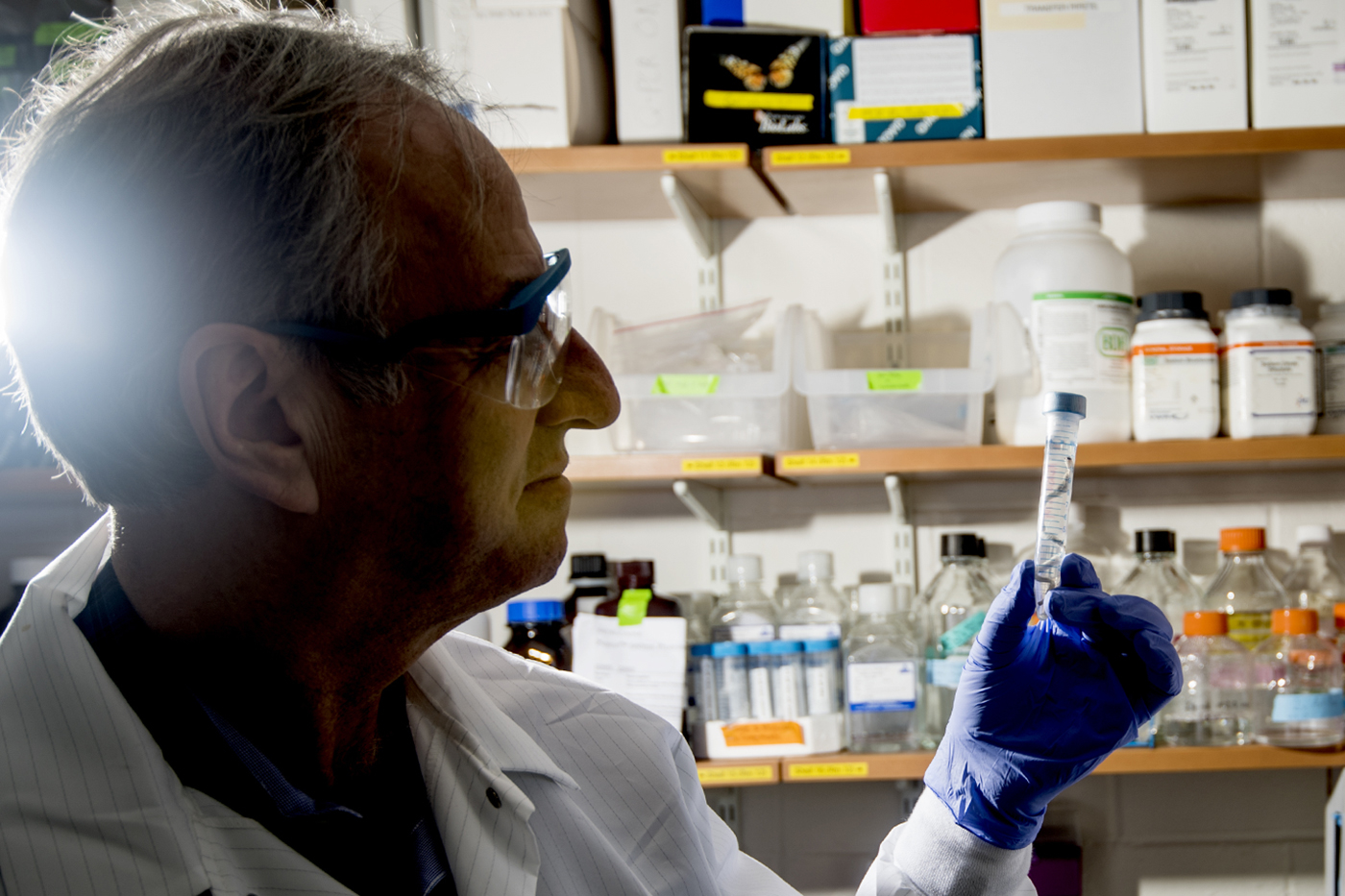Unlike humans, shipworms have no problem with bacteria getting in their cells. Why?

If a piece of wood winds up in the ocean, odds are, shipworms will find it. These fleshy, worm-like clams use their shells to scrape and carve their way into unprotected logs, driftwood, docks, and ships and make themselves at home.
Shipworms, whose trowel-like shells are far too small to hide themselves inside, use the wood for protection, but that’s not all. With the help of some friendly bacteria living within their cells, shipworms are able to break down wood and use it as a source of food.
There’s a fine line between helpful bacteria and harmful bacteria, says Dan Distel, who directs the Ocean Genome Legacy Center at Northeastern’s Marine Science Center. And studying helpful bacteria, or symbionts, in shipworms may help researchers understand dangerous infections in humans.

Dan Distel directs the Ocean Genome Legacy Center at Northeastern’s Marine Science Center. Photo by Matthew Modoono/Northeastern University
“The idea is that if you can understand how a beneficial symbiosis like this works, you’re going to learn strategies that bacteria use, and some of those will apply to understanding pathogens,” Distel says.
We humans have our own bacterial partners, but they typically reside on the surfaces of cells on our skin and digestive system, not inside them. If bacteria are getting into a cell, that’s bad news in humans—tuberculosis, Legionnaires’ disease, Rocky Mountain spotted fever, and a variety of other illnesses are caused by bacteria invading our cells. The more researchers know about how this process occurs, the more likely they are to find a way to disrupt it.
But people aren’t exactly lining up to be injected with dangerous diseases by curious scientists. Instead, Distel and his colleagues at Northeastern intend to use shipworms and their bacteria as a proxy, or model system, to learn about these interactions. The team recently received a grant from the Gordon and Betty Moore Foundation for this purpose.
“We can do things in these model systems that would be impractical or unethical to do in a human system,” Distel says. “The goal is always, first, to understand the model system well enough that you really understand what’s going on at a fundamental level. And then, once you’re there, you can then begin to use that to understand other systems.”
The researchers are focusing on a species commonly known as the blacktip shipworm, Lyrodus pedicellatus, and its symbionts. The shipworms are easy to care for and breed in the lab, and the researchers have successfully cultured the right bacterial species separately from the shipworms.
One of the big questions Distel and his colleagues still have to answer, though, is how a shipworm acquires its bacterial buddies. The researchers think there is a period of time during the shipworm’s larval stage when it doesn’t have symbionts. So how does it pick up these bacteria? How do they avoid the shipworm’s immune responses and get inside the cells?
To answer some of these questions, the researchers will tweak the genes of the bacteria, and see if the changes interfere with the bacteria’s ability to get inside shipworm cells.
“If you can grow the bacteria, then you can genetically manipulate the bacteria; so we could add genes or knock genes out,” Distel says. “We can create random mutants, and you can begin to try to figure out what genes are involved in the process of infection.”
Establishing shipworms and their symbiotic bacteria as a model system will have other benefits as well. They could help researchers learn more about other animals in the ocean that rely on bacteria, but are harder to study, such as the giant tube worms clustered around deep sea hydrothermal vents.
And their investigations could also provide opportunities to explore alternative fuel sources. The bacteria in shipworms breaks down wood into sugars, which can then be converted into biofuel.
“Enzymes made by these bacteria could be helpful in figuring out how to create new types of processes for making paper, or processes for converting paper waste into something useful,” Distel says.
For media inquiries, please contact Shannon Nargi at s.nargi@northeastern.edu or 617-373-5718.





